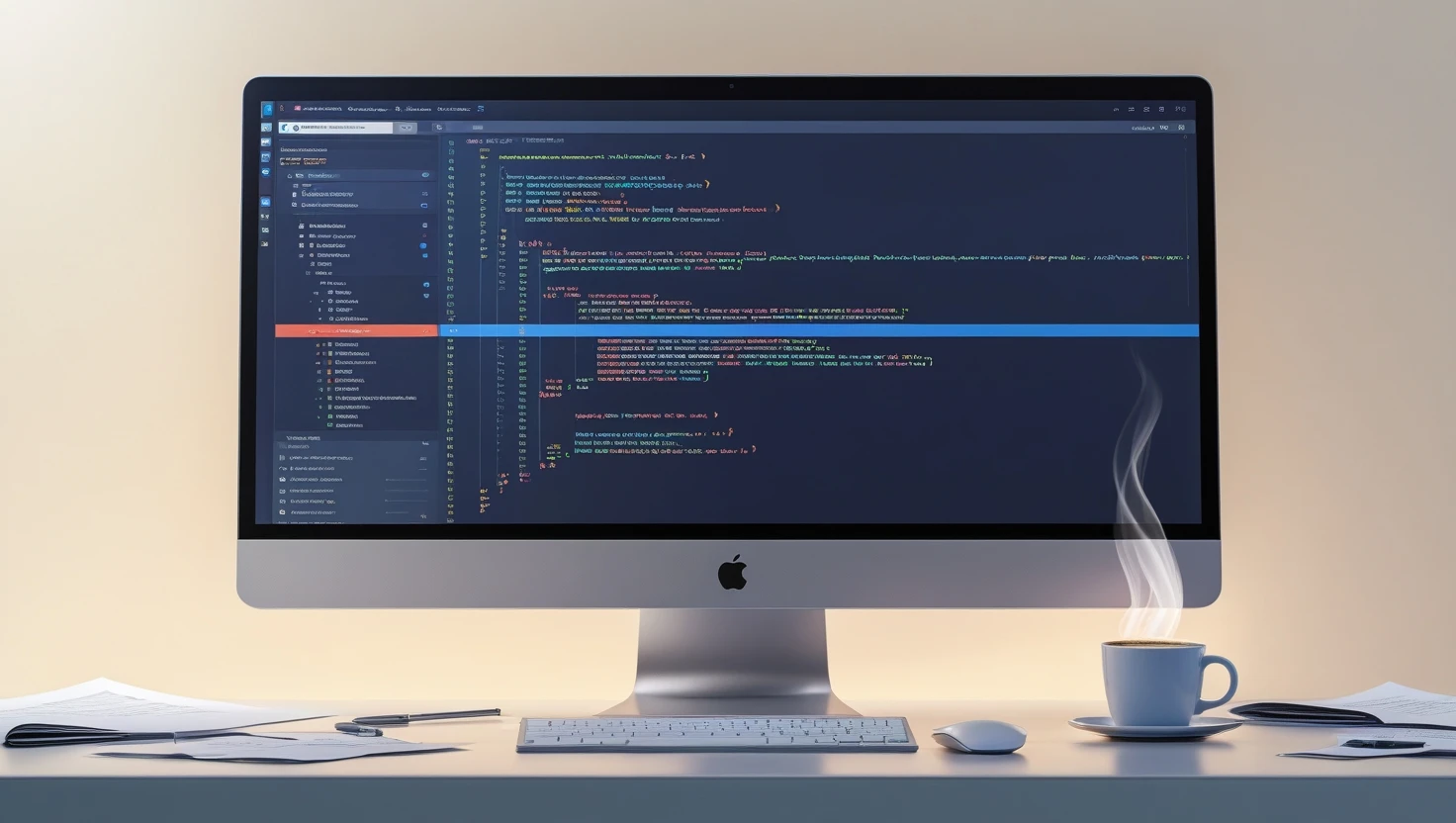Gaming Laptop vs Normal Laptop — Which to Choose? Performance, Portability & Price Compared
Choosing between a gaming laptop and a normal laptop can feel confusing—both look similar at a glance, but they are built for different priorities and users. This 300-word guide clears the fog by translating technical differences into practical choices. You’ll learn how CPU, GPU, RAM, storage, cooling, display refresh rate, battery life, and chassis design affect daily use. The article explains why gaming laptops provide dedicated graphics, higher refresh-rate screens, and aggressive cooling to deliver smooth play and heavy GPU workloads, while normal laptops prioritize portability, long battery life, quiet operation, and value for everyday tasks like browsing, video calls, office software, and study. It walks through typical user profiles—students, office workers, casual gamers, content creators, and frequent travelers—so you can match a laptop type to your routine and future plans. Practical buying tips include a simple in-store checklist (display, keyboard comfort, thermals, ports, and upgrade options), advice on whether to invest in GPU or battery life based on use-case, and how accessories (external monitor, mouse, cooling pad) can change what laptop you should buy. The description also covers maintenance basics—driver updates, thermal cleaning, battery care—and budget strategies like last-year model discounts and certified refurbished options. It highlights trends such as thin gaming laptops and improving integrated GPUs that blur lines between categories, and points out when cloud gaming or an external GPU might be viable alternatives. By the end you’ll have a clear decision roadmap: pick a gaming laptop for high-performance gaming or GPU-heavy creative work; choose a normal laptop for mobility, longer battery life, and quieter daily use. This guide aims to help you buy confidently and get the right balance between performance, portability, and price.
Gaming Laptop vs Normal Laptop – Which to Choose?
Choosing a laptop is a practical decision that depends on how you work and play. Gaming laptops and normal (everyday) laptops share similar shapes and operating systems, but their design priorities differ. This guide breaks down the real differences and helps you pick the right laptop for your needs and budget.
Quick summary: the core idea
Gaming laptops prioritize raw graphics performance, high refresh-rate displays, robust cooling, and often a bolder design.
Normal laptops prioritize portability, battery life, quiet operation, and a balanced feature set for productivity and media.
Read on to understand the technical differences, real-world trade-offs, and a clear decision roadmap based on common user profiles.
Key hardware differences explained
CPU (processor)
Both laptop types use similar CPU families (Intel, AMD). Gaming laptops often pair high-core-count or high-frequency CPUs to feed demanding games.
Normal laptops favor power-efficient chips (U-series or Y-series) for longer battery life and cooler operation.
GPU (graphics)
The GPU is the biggest divider. Gaming laptops include discrete GPUs (NVIDIA/AMD) that accelerate games, 3D modeling, and GPU-accelerated video tasks.
Normal laptops usually rely on integrated graphics sufficient for browsing, office apps, video streaming, and light photo editing.
RAM and storage
Gaming machines typically ship with higher RAM (16GB+) and fast NVMe SSDs to reduce load times.
Normal laptops often start at 8GB RAM and may offer SATA or NVMe SSDs; upgrades are sometimes possible depending on the model.
Cooling and chassis
Gaming laptops include larger fans, heat pipes, and vents, which enable sustained performance but increase size and noise.
Normal laptops keep cooling minimal for quiet operation and thin designs.
Display and refresh rate
Gaming laptops often have 120Hz, 144Hz or higher refresh-rate panels for smoother motion in games.
Normal laptops usually offer 60Hz panels tuned for color accuracy and battery efficiency.
Battery life and portability
Gaming laptops sacrifice battery life for performance — expect 3–6 hours under mixed use.
Normal laptops can reach 8–15+ hours with efficient processors and carefully tuned displays.
Build, weight, and design
Gaming laptops are heavier and thicker due to cooling and larger batteries. They sometimes have RGB lighting and aggressive styling.
Normal laptops emphasize slim profiles, lightweight materials, and understated looks suitable for office or classroom use.
Real-world use cases
When to choose a gaming laptop
You play modern AAA titles and want stable 60+ FPS at decent settings.
You do video editing, 3D rendering, or GPU-accelerated machine learning tasks.
You prefer a high-refresh display for competitive gaming.
You don’t mind carrying a heavier machine and charging more frequently.
When a normal laptop is better
You need all-day battery life for school, office, or travel.
Portability and quiet operation matter (e.g., frequent flights, libraries).
Your work is mainly web-based, documents, spreadsheets, or light photo editing.
You have a tighter budget and prefer value and simplicity.
Performance trade-offs in depth
Gaming performance
GPU capability (VRAM, cores, architecture) determines playable settings and frame rates.
CPU is important for games that use many cores or physics, but GPU is the primary limiter at higher resolutions.
Productivity performance
For office tasks and web apps, even integrated graphics with a decent CPU are sufficient.
Heavy productivity (large spreadsheets, software builds, virtual machines) benefits from more RAM, cores, and fast SSDs — features available in both premium normal laptops and gaming machines.
Content creation
Video editors and 3D artists benefit from discrete GPUs and fast storage. A compact gaming laptop can double as a portable content-creation workstation.
Price and value: where money matters
Entry-level normal laptops can start very affordable — good for students and casual users.
Mid-range gaming laptops are pricier because of GPUs; they offer the best value if gaming or GPU-heavy work is required.
Premium ultrabooks with lightweight builds and long battery life sometimes cost as much as mid-tier gaming machines but favor portability and premium materials.
Where to spend and where to save
Invest in GPU if gaming or GPU-accelerated work is core to you.
Invest in an SSD and at least 16GB RAM for smooth multitasking.
Prioritize a good keyboard and screen for daily comfort; peripherals can be added later.
Common myths and realities
Myth: A gaming laptop is only for gamers
Reality: Gaming laptops are powerful general-purpose machines suitable for creators and engineers who need GPU power.
Myth: Normal laptops cannot handle games at all
Reality: Many casual games run fine on modern integrated graphics, and cloud gaming options let you play heavier titles without a discrete GPU.
Buying tips and demo checklist
When you test laptops in-store or read reviews, check:
Display quality: brightness, color reproduction, and refresh rate (if gaming).
Keyboard and trackpad: key travel, spacing, and comfort for typing.
Ports: HDMI, USB-A, USB-C, Ethernet — match your peripherals.
Fan noise: run a stress test or heavy video to listen for excessive noise and throttling.
Battery life: check manufacturer claims versus independent reviews.
Thermals: feel vent temperatures; extreme heat can be uncomfortable.
Upgrade options: can you add RAM or swap the SSD later?
Upgradability and lifespan
Gaming laptops often allow SSD and RAM upgrades; chassis and GPU are fixed.
Many modern ultrabooks have soldered RAM and limited upgrades — plan ahead when buying.
Lifespan depends on usage: heavy gaming shortens battery life faster; light daily use preserves it.
Maintenance and care
Keep drivers and firmware up to date; GPU drivers particularly impact gaming performance.
Use a cooling pad if you game frequently to reduce temperatures.
Avoid frequent full discharges; keep battery between 20–80% for longer battery health.
Clean fans and vents periodically to prevent dust buildup.
Portability vs performance: a practical comparison
If you commute daily or travel a lot, prioritize weight (normal laptop).
If you mostly use the laptop at home and want performance, a gaming laptop makes sense.
Consider an external monitor and docking setup: a lightweight laptop plus a home monitor can offer the best of both worlds.
Future-proofing your purchase
For gaming: choose a GPU with enough VRAM for upcoming titles (6–8GB minimum for comfortable 1080p settings).
For productivity: choose at least 16GB RAM and NVMe storage for responsiveness.
Consider Wi-Fi 6 and Thunderbolt/USB4 ports for compatibility with fast peripherals.
How to test gaming performance without buying
If you are unsure whether a discrete GPU is necessary, try these options:
Cloud gaming: streaming games to a normal laptop works if you have a stable, fast internet connection — but expect some latency.
Game demos and low-spec titles: test whether integrated graphics handle esports titles or older releases.
Borrow a friend’s machine: practical experience with a gaming laptop reveals real noise, heat, and ergonomics.
Improving gaming on a normal laptop
Even on a non-gaming laptop you can get better gaming performance:
Lower resolution and graphics settings to reduce GPU load.
Use the OS or GPU control panel’s performance mode.
Close background apps and use high-performance power profiles.
Move games to an external SSD for faster load times if internal storage is slow.
Accessories and peripherals that change the equation
Accessories can make a normal laptop more appealing for gaming or productivity:
External mouse and mechanical keyboard provide better response than a built-in keyboard.
Cooling pads reduce surface temperature and may help sustained performance.
External monitor for larger displays and higher refresh rates; pair a lightweight laptop with a home monitor for portability and performance.
Headset and microphone for online gaming and clear communication.
Repairs, warranty, and serviceability
Gaming laptops often have replaceable RAM and SSDs, but repairs may be costlier due to specialized parts.
Thin ultrabooks may have soldered RAM and sealed batteries, making upgrades or repairs harder.
Check warranty coverage details (battery, screen, accidental damage) and opt for extended or on-site service if you travel frequently.
Is a convertible or 2-in-1 a good idea?
Convertibles and 2-in-1s favor portability and tablet-like interaction, but rarely include discrete GPUs. They are excellent for note-taking and presentations—less so for high-end gaming.
Buying refurbished or second-hand: what to watch
Inspect battery health, fan noise, and thermal performance.
Verify original specs and ensure there’s no liquid damage.
Prefer certified refurbished units with a short warranty.
Frequently Asked Questions (FAQs)
Can a gaming laptop be a good work laptop?
Yes. Gaming laptops are powerful and handle heavy multitasking, virtualization, and creative software. Trade-offs are battery life and weight.
Will a normal laptop run games?
Casual and older games run well on many normal laptops. Modern high-demand titles may require reduced settings or cloud streaming.
Do gaming laptops overheat and throttle?
They can under long, intense loads. Check independent thermal tests before buying; efficient cooling design reduces throttling.
How important is the refresh rate?
High refresh rates (120Hz, 144Hz+) give smoother motion and better responsiveness in competitive games. For general use, 60Hz is typically fine.
Is integrated graphics improving?
Yes. Recent integrated GPUs are much better for casual gaming and light creative work, but they still lag behind discrete GPUs for heavy workloads.
Final recommendation checklist
List your primary tasks and rank them by daily importance.
Assign points to mobility (weight), battery life, GPU needs, and budget.
If GPU score is highest, choose a gaming or workstation laptop. If mobility or battery score is highest, choose a normal laptop.
Read independent reviews that stress-test thermals and battery performance.
Conclusion
Gaming laptops and normal laptops are both valuable tools. The "right" choice depends on daily tasks, mobility needs, and budget. Pick a gaming laptop if you demand high graphics performance or do heavy creative work. Choose a normal laptop if portability, battery life, quiet operation, and value matter more. Use the checklist and buying tips above to prioritize features and find the best fit for your life. With clear priorities, you can pick a laptop that serves as a reliable daily companion—whether for winning games, creating content, or getting work done on the move.












